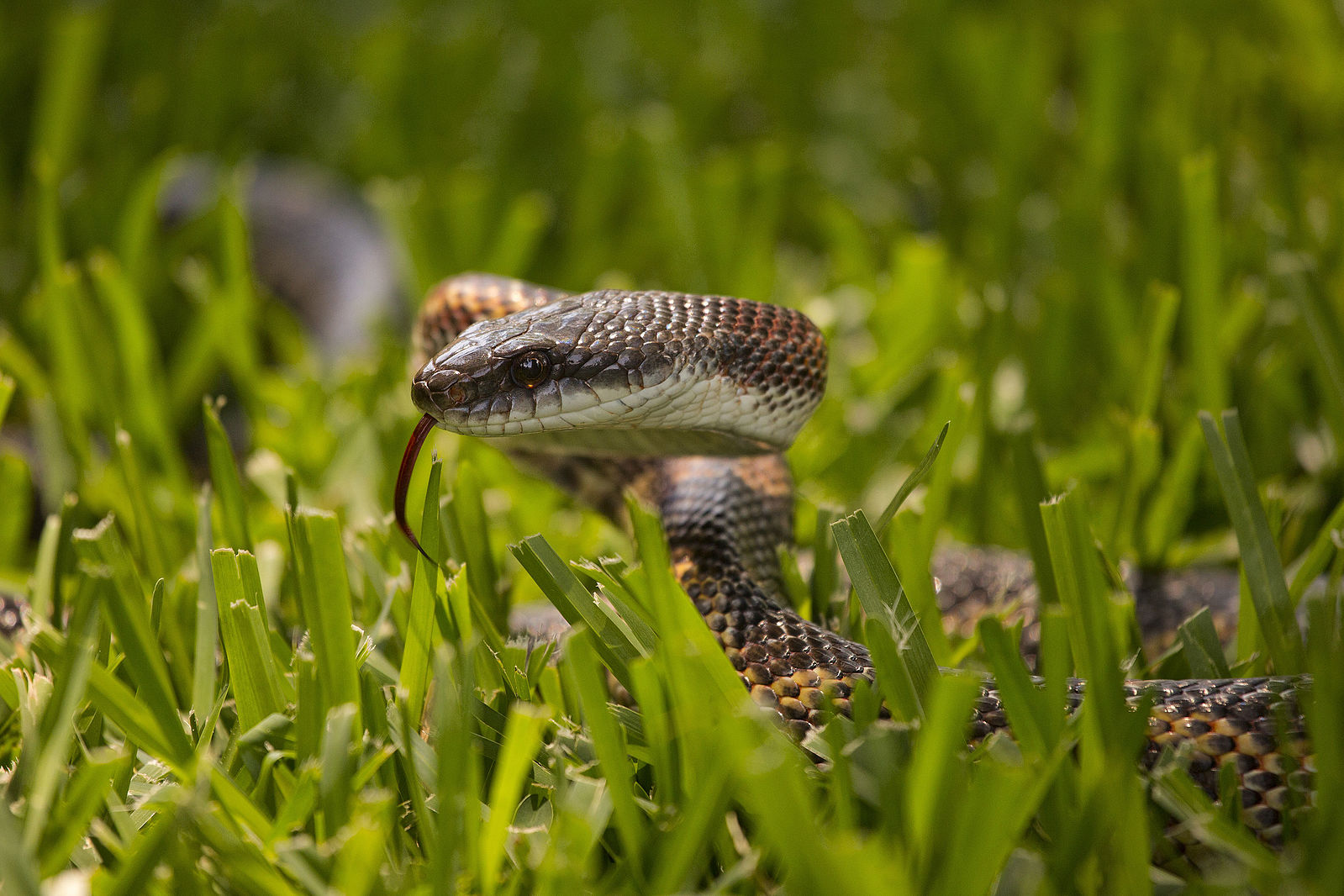The summer season is here — and so are the snakes. With temperatures hitting triple digits across the state, Texans might just stumble across the critters in their yards or while hitting the trails.
Summer, also known as “snake season,” is the perfect time for snakes to slither out of their hiding places because the cold-blooded creatures rely on hot temperatures to perform basic metabolic functions. Over 105 snake species, 15 of which are venomous, call Texas home.
Greg Pandelis, curator of the Amphibian and Reptile Diversity Research Center at The University of Texas at Arlington, shared what he thinks Texans should know about snake season and what to do if they cross paths with one.
What types of snakes might someone run into in Texas?
Pandelis said there are several snake species Texans might find that are harmless. The Texas rat snake, the rough Earth snake and water snakes – none of which contain fatal venom – are just a few. But those in North or East Texas might stumble across the copperhead snake — a known venomous snake.
“The most common thing you’re probably going to find around the DFW area, East Texas, other areas, is probably going to be the copperhead. That’s actually a venomous snake, but it’s quite common,” Pandelis said.
However, copperhead venom is relatively weak compared with other snakes, and a bite from one rarely results in death.
How can someone spot whether a snake is venomous or not?
If people can identify Texas’ most common venomous snakes, they should be fine, Pandelis said. There are many websites and field guides people can look at that can help them learn whether a snake is venomous or not.
“That’ll take care of 90 percent of what you’re going to see. As long as you can recognize copperheads, diamondback rattlesnakes and cottonmouth — all fairly common venomous snakes in Texas – that pretty much takes care of that,” Pandelis said.
What should someone do if they come across a snake?
Pandelis said it’s a common misconception that a snake will strike first. If the snake is moving along its way, he recommends not trying to approach it, maim it or kill it, which can result in a potential bite.
“A lot of folks get bit that way because they’re putting themselves in really close contact with a potentially venomous animal that’s now actually angry and it’s going to be defensive,” Pandelis said. “It’s not going to probably come towards you and attack you per se, but it will stand its ground and strike, justifiably, if you’re messing with it.”
If the snake must be removed because it’s in a backyard near children or pets, Pendelis said a gentle spray from a garden hose could get the snake to move along its way. People can also contact their local animal control to have the snake completely removed.
If one snake is found, is that an indication there’s more in the area?
If people come across one snake, it’s not necessarily an indication that there is a larger infestation, Pandelis said. Those living in highly wooded areas might be more likely to come across several snakes due to the nature of their environment, but that’s not always the case for people in urban areas.
“Once in a while, let’s say you live in a suburban neighborhood or something, a snake might pop up and that’s probably like a once in a great while kind of thing where it sort of lost its way and ended up there,” Pandelis said.
More resources
– Snake safety and identification from the Texas Parks and Wildlife Department
– Venomous snake bites: symptoms & first aid from the Centers for Disease Control and Prevention
















